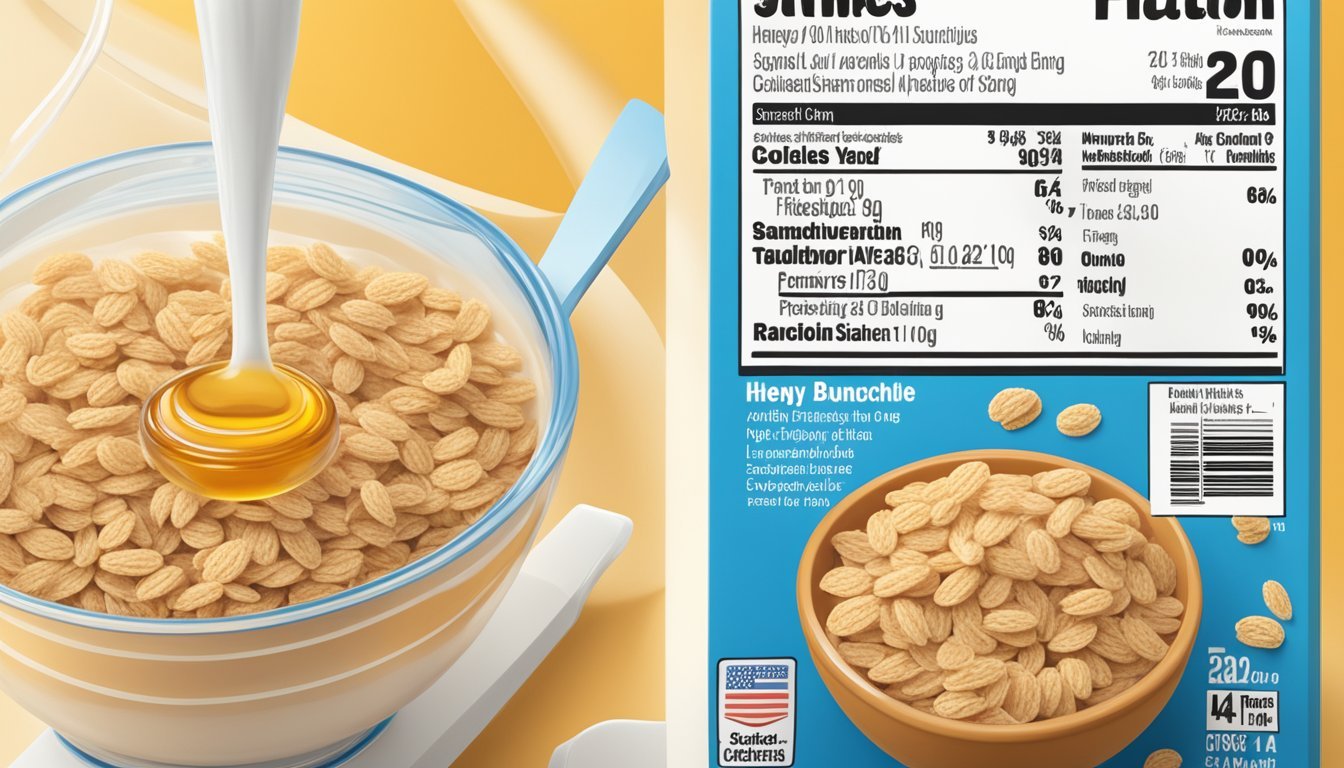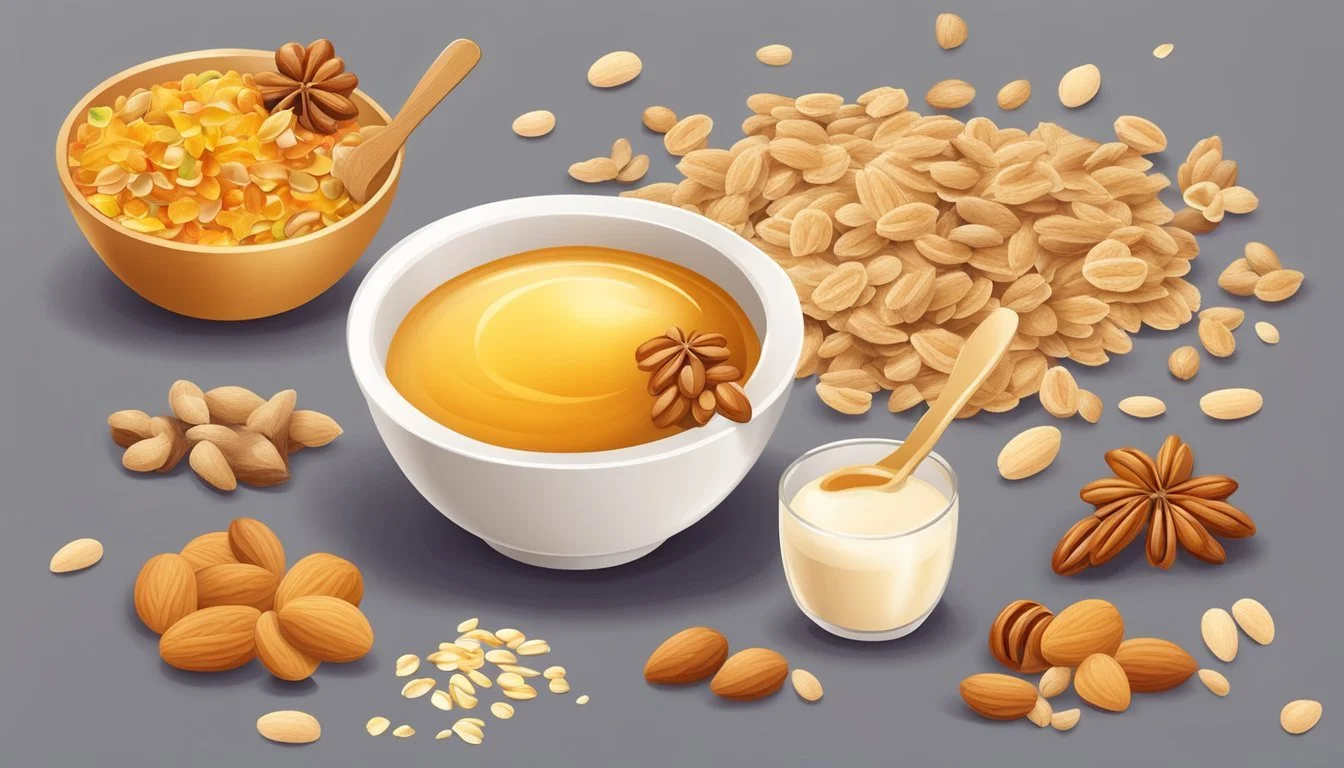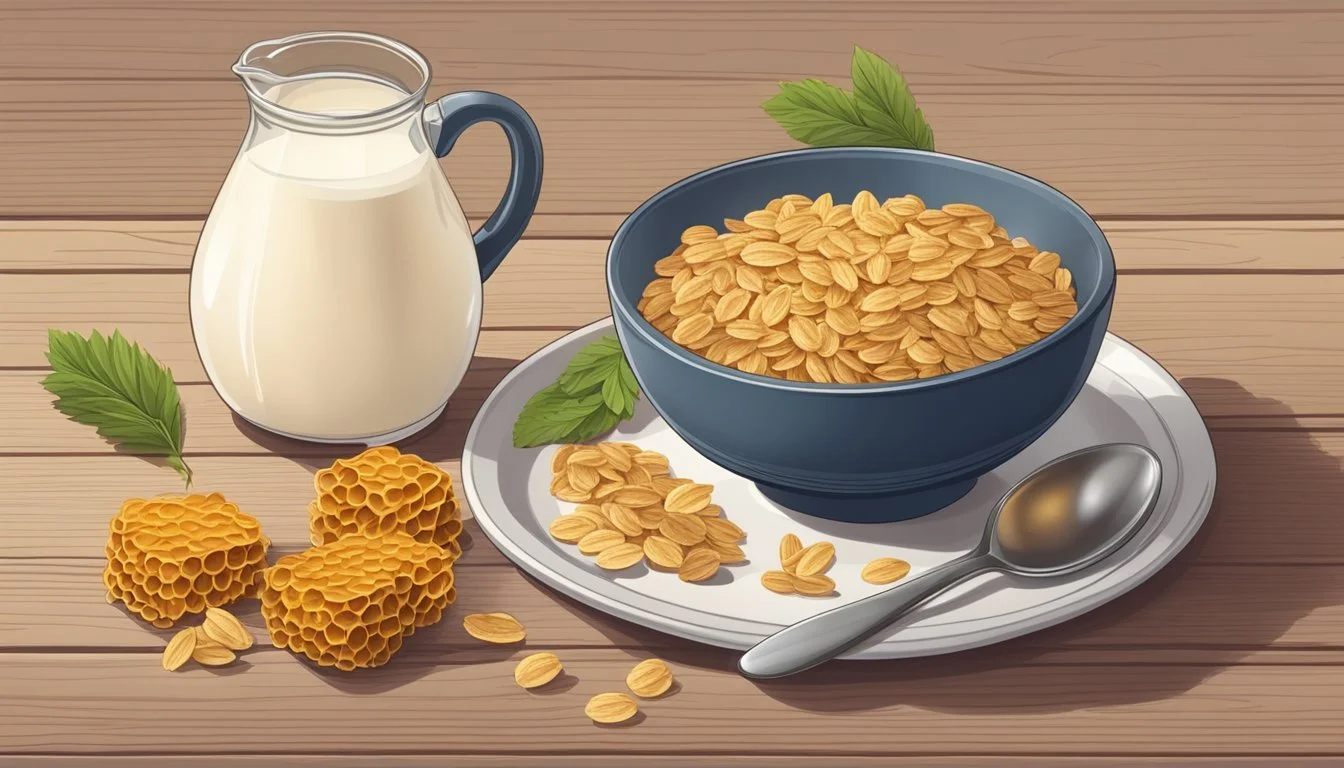Honey Bunches of Oats Nutrition Facts & More
Key Facts for a Balanced Breakfast
Honey Bunches of Oats is a popular breakfast cereal that combines whole grains, crispy flakes, and crunchy oat clusters. Many consumers enjoy its sweet taste and varied texture, but questions often arise about its nutritional value.
A single serving of Honey Bunches of Oats (about 1 cup) contains approximately 160 calories, with the majority coming from carbohydrates. The cereal provides a mix of whole and refined grains, along with added sugars and fortified vitamins and minerals. It offers some protein and fiber, though not in significant amounts.
While Honey Bunches of Oats does contain some beneficial nutrients, it's important to consider its sugar content and overall nutritional profile when incorporating it into a balanced diet. Comparing it to other breakfast options can help individuals make informed choices about their morning meals and daily nutrient intake.
Nutrition Facts Overview
Honey Bunches of Oats provides a mix of essential nutrients in each serving. A standard 3/4 cup (30 grams) serving contains approximately 120 calories.
The cereal is relatively low in fat, with about 2.2 grams of total fat per serving. Saturated fat content is minimal at 0.3 grams.
Carbohydrates make up the majority of the cereal's nutritional profile, accounting for around 82% of its caloric content. The total sugar content varies depending on the specific variety.
Protein content is modest, contributing about 7% of the total calories. This translates to roughly 2-3 grams of protein per serving.
Honey Bunches of Oats is fortified with various vitamins and minerals. It's particularly high in iron, providing up to 60% of the daily value in a single serving.
The cereal also contains significant amounts of vitamin A, with some varieties offering up to 15% of the daily value per serving.
While not a high-fiber cereal, Honey Bunches of Oats does contain some dietary fiber from its whole grain ingredients.
Sodium levels should be considered for those monitoring their salt intake, as cereals often contain added salt for flavor enhancement.
Macronutrient Profile
Honey Bunches of Oats contains a mix of carbohydrates, fats, and proteins. The cereal's macronutrient composition varies slightly between flavors, but carbohydrates make up the majority of its caloric content.
Carbohydrates and Sugars
Carbohydrates account for 77-82% of the calories in Honey Bunches of Oats. A 3/4-cup (30-gram) serving provides about 24-25 grams of carbohydrates. This includes both complex carbohydrates from grains and simple sugars.
The cereal contains added sugars, contributing to its sweet taste. Sugar content varies by flavor, but typically ranges from 6-9 grams per serving.
Fiber content is relatively low, at around 2 grams per serving. This is less than many whole grain cereals, which may offer 4-5 grams or more per serving.
Fats and Oils
Fats make up 11-17% of the calories in Honey Bunches of Oats. A typical serving contains 1.5-2.5 grams of total fat. The fat content is higher in varieties with nuts, such as the almond flavor.
Most of the fats are unsaturated, coming from ingredients like vegetable oils. Saturated fat content is generally low, around 0.5 grams per serving.
The cereal contains negligible amounts of trans fats. Some varieties may include small amounts of omega-3 and omega-6 fatty acids, though not in significant quantities.
Proteins and Amino Acids
Protein comprises 6-7% of the calories in Honey Bunches of Oats. A serving provides about 2-3 grams of protein, which is relatively low compared to high-protein cereals or protein-fortified options.
The protein in Honey Bunches of Oats comes primarily from the grains used in its production, such as wheat and corn. These plant-based proteins offer a mix of amino acids, though they are not considered complete proteins.
For those seeking higher protein intake, combining the cereal with milk or yogurt can boost the overall protein content of the meal.
Vitamin Content
Honey Bunches of Oats contains a variety of essential vitamins, contributing to its nutritional profile. These vitamins play crucial roles in supporting overall health and bodily functions.
Fat-Soluble Vitamins
Honey Bunches of Oats provides fat-soluble vitamins, primarily vitamin A. Vitamin A palmitate is added to the cereal during fortification. This vitamin supports vision, immune function, and skin health.
The cereal does not naturally contain significant amounts of vitamins D or E. Manufacturers may choose to fortify some varieties with these vitamins, but this is not standard across all Honey Bunches of Oats products.
Water-Soluble Vitamins
Honey Bunches of Oats is a good source of several water-soluble vitamins. These include:
Vitamin B1 (thiamin mononitrate)
Vitamin B2 (riboflavin)
Vitamin B3 (niacinamide)
Vitamin B6
These B vitamins are essential for energy metabolism, nervous system function, and cell health. The cereal provides about 25% of the daily value for these vitamins per serving.
Folic acid, another B vitamin, is also added to Honey Bunches of Oats. This vitamin is crucial for DNA synthesis and cell division.
Vitamin C is not typically added to Honey Bunches of Oats, as it is more commonly found in fruits and vegetables rather than grain-based cereals.
Mineral Content
Honey Bunches of Oats provides several essential minerals in varying amounts. The cereal contains both major minerals and trace minerals that contribute to its nutritional profile.
Major Minerals
Honey Bunches of Oats contains calcium, an important mineral for bone health. A single serving provides about 10% of the daily value for calcium. Iron is another key mineral present, with one serving offering approximately 60% of the daily value.
Phosphorus and magnesium are also found in Honey Bunches of Oats. These minerals work together to support bone structure and energy metabolism. The cereal contains moderate amounts of potassium, which plays a role in maintaining proper fluid balance and nerve function.
Trace Minerals
Zinc is a notable trace mineral in Honey Bunches of Oats. It supports immune function and wound healing. The cereal contains small amounts of zinc, contributing to daily intake.
Other trace minerals may be present in minute quantities. These can include copper, manganese, and selenium. While not significant sources, they add to the overall mineral content of the cereal.
Fortification practices may influence mineral levels in Honey Bunches of Oats. Different varieties of the cereal may have slightly different mineral profiles due to variations in ingredients and fortification.
Health Considerations
Honey Bunches of Oats offers both nutritional benefits and potential drawbacks. The cereal's composition impacts dietary fiber intake, sugar consumption, and allergen considerations.
Dietary Fiber Benefits
Honey Bunches of Oats contains whole grain oats, providing dietary fiber. A 3/4-cup serving offers about 2 grams of fiber, contributing to daily fiber needs. Fiber aids digestion, promotes feelings of fullness, and may help manage blood sugar levels.
Consuming adequate fiber is linked to improved heart health and lower cholesterol. The American Heart Association recommends 25-30 grams of fiber daily for adults. While Honey Bunches of Oats contributes to fiber intake, it should be part of a varied diet to meet recommended levels.
Reducing Added Sugars
Sugar content is a key consideration in Honey Bunches of Oats nutrition. A typical serving contains 8-9 grams of sugar, with some varieties having higher amounts. Part of this comes from added sugars, which the American Heart Association advises limiting.
To reduce sugar intake:
Choose lower-sugar varieties
Control portion sizes
Pair with unsweetened milk alternatives
Add fresh fruit for natural sweetness
Balancing Honey Bunches of Oats with lower-sugar foods throughout the day can help manage overall sugar consumption.
Allergens and Sensitivities
Honey Bunches of Oats contains wheat and may contain other allergens. People with celiac disease or gluten sensitivity should avoid this cereal. Some varieties include tree nuts, posing risks for those with nut allergies.
Key allergen information:
Contains wheat
May contain tree nuts
Processed in facilities with other allergens
Always check ingredient labels, as formulations can change. Those with food allergies or sensitivities should consult a healthcare provider before including Honey Bunches of Oats in their diet.
The cereal is generally well-tolerated by most people without specific food sensitivities. Its diverse ingredient list provides various nutrients but requires consideration for those with dietary restrictions.
Cereal Ingredients Breakdown
Honey Bunches of Oats contains a mix of grains, sweeteners, and additives. The primary ingredients include whole grain wheat, whole grain rolled oats, rice, and corn.
Sweeteners play a significant role in the cereal's flavor profile. Sugar, honey, corn syrup, and molasses contribute to its characteristic taste.
Oils such as canola and/or soybean oil are used in the production process. These help bind ingredients and enhance texture.
The cereal also incorporates wheat flour and malted barley flour, which contribute to its structure and flavor.
Additional ingredients include:
Salt (for flavor enhancement)
Caramel color (for visual appeal)
Barley malt extract (for flavor and color)
Natural and artificial flavors
Annatto extract (for color)
BHT (a preservative)
These components work together to create the cereal's distinctive taste, texture, and appearance. The combination of whole grains, sweeteners, and carefully selected additives results in a product designed to appeal to consumers' palates while providing some nutritional value.
Product Variations
Honey Bunches of Oats offers several product variations to cater to different taste preferences. Each variety maintains the cereal's signature blend of crispy flakes and crunchy oat clusters while introducing unique flavors and ingredients.
Original
The Original Honey Bunches of Oats combines four different grains with honey-coated clusters. It contains a mix of corn, whole grain wheat, rolled oats, and rice. The cereal provides a balance of sweetness from honey and a satisfying crunch from the oat clusters.
This variety is fortified with essential vitamins and minerals, including iron, niacin, and zinc. The Original flavor serves as a versatile base for various recipes, from breakfast parfaits to homemade trail mix.
With Almonds
Honey Bunches of Oats With Almonds adds sliced almonds to the classic recipe. This variation introduces a nutty flavor and extra crunch to the cereal. Almonds contribute healthy monounsaturated fats, protein, and additional vitamins and minerals to the nutritional profile.
The almond slivers complement the honey-sweetened oat clusters and crispy flakes. This variety works well as a topping for yogurt or incorporated into baked goods for added texture and flavor.
Honey Roasted
The Honey Roasted version intensifies the honey flavor in Honey Bunches of Oats. It features a more pronounced sweetness while maintaining the cereal's signature texture. The honey-coated flakes and clusters provide a rich, golden color and enhanced aroma.
This variety contains slightly more sugar per serving compared to the Original. It's particularly popular for snacking straight from the box or as a sweet addition to dessert recipes. The Honey Roasted flavor pairs well with fresh fruits or can be used as a crunchy topping for ice cream.
Packaging and Serving Suggestions
Honey Bunches of Oats comes in various box sizes to suit different household needs. The cereal is typically packaged in a sturdy cardboard box with an inner plastic bag to maintain freshness.
On the box, consumers can find important information such as the ingredient list, nutrition facts, and serving size. The recommended serving size is usually 1 cup (40 grams) of cereal.
For convenience, some varieties may include a measuring cup inside the box. This helps consumers accurately portion their servings and manage their nutritional intake.
To enjoy Honey Bunches of Oats, simply pour the desired amount into a bowl and add cold milk. For a twist, try using almond milk or yogurt as alternatives.
The cereal can also be used as a topping for smoothie bowls or mixed into homemade trail mix for a crunchy snack. Some people enjoy it dry as a quick on-the-go option.
For optimal freshness, store the cereal in a cool, dry place. After opening, roll down the inner bag tightly and close the box to prevent moisture from entering.
Brand Information
Honey Bunches of Oats is a popular breakfast cereal brand produced by Post Consumer Brands. The cereal combines crispy flakes with crunchy oat clusters and comes in various flavors.
Manufacturer History
Post Consumer Brands, the maker of Honey Bunches of Oats, has a rich history in the cereal industry. The company was founded in 1895 by C.W. Post, who introduced Grape-Nuts cereal as its first product.
Post expanded its product line over the decades, becoming a major player in the breakfast cereal market. In 1989, Post launched Honey Bunches of Oats, which quickly became one of its most successful cereals.
The brand has maintained its popularity through innovative marketing and consistent quality. Post Consumer Brands continues to be a leading cereal manufacturer in North America.
Product Line Evolution
Honey Bunches of Oats started with its original honey-roasted flavor. Over time, Post expanded the product line to cater to diverse consumer preferences.
New varieties were introduced, including:
Honey Bunches of Oats with Almonds
Honey Bunches of Oats with Real Strawberries
Honey Bunches of Oats Cinnamon Bunches
The brand also ventured into granola products, offering options like French Vanilla Granola. This expansion allowed Honey Bunches of Oats to reach a wider audience and maintain its relevance in the competitive cereal market.
Post continues to innovate, introducing flavors like Salted Caramel to keep the brand fresh and appealing to consumers.








